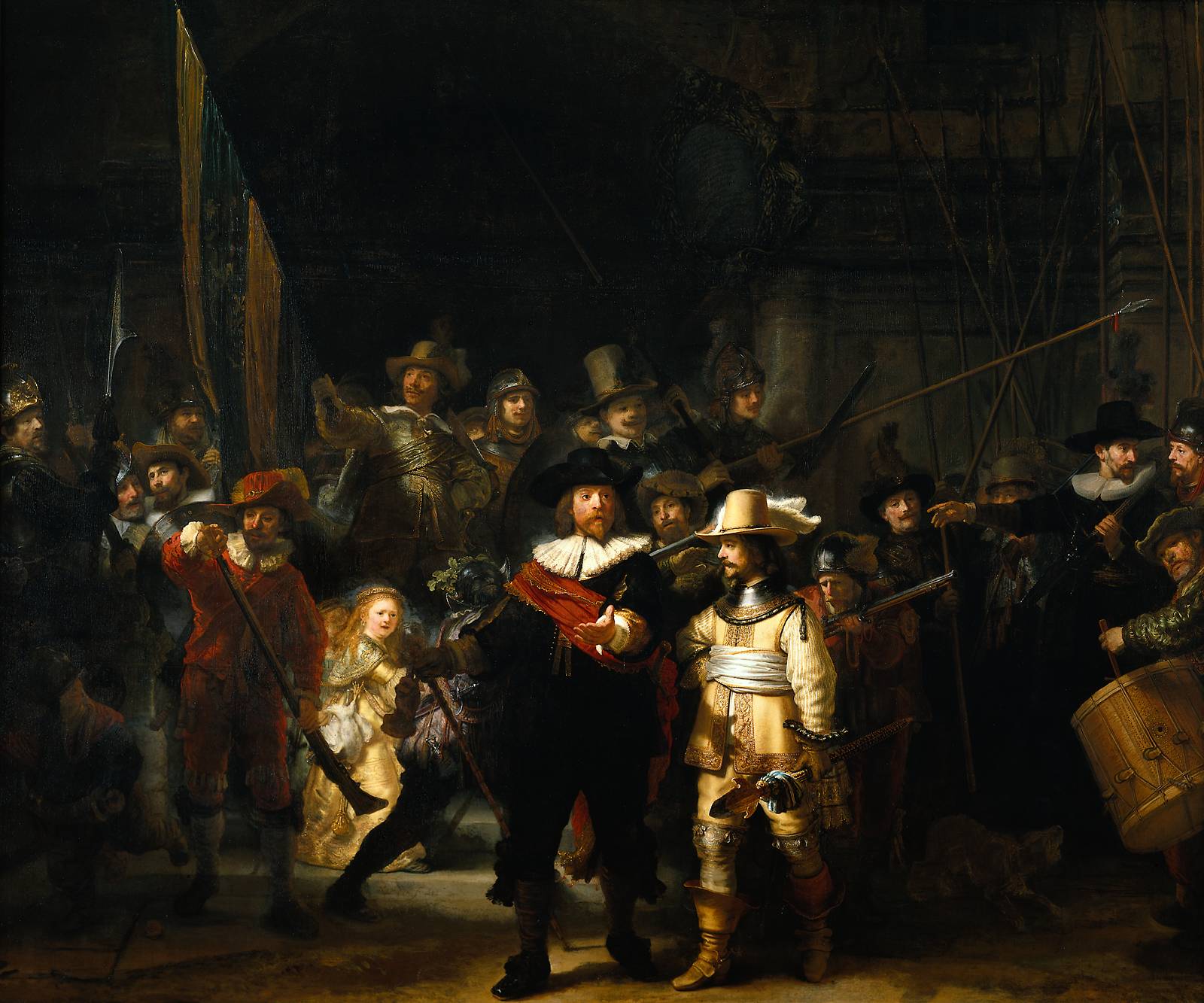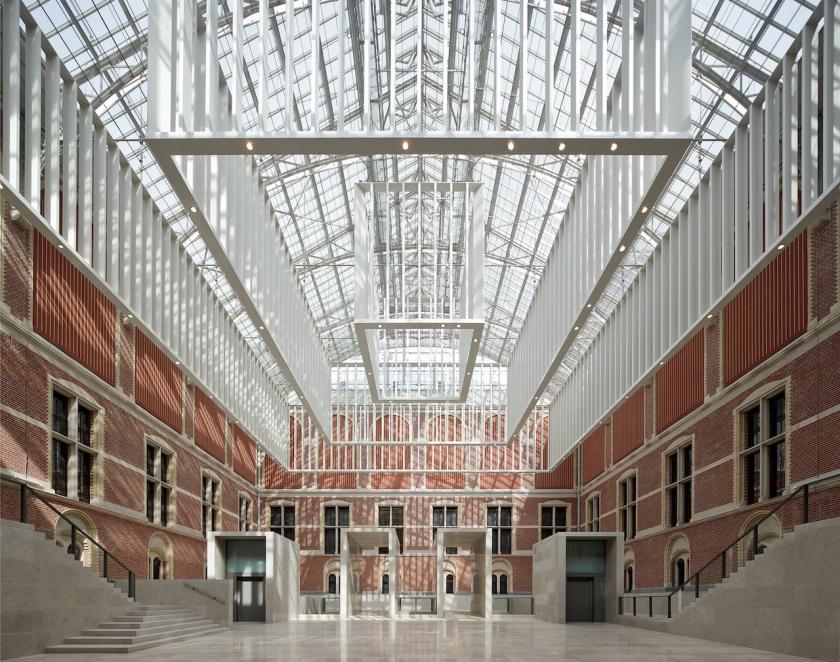The Rijksmuseum is reopening after 10 years. What took it so long? Escalating costs, contractual problems, a protracted battle with the cycling lobby (this is Amsterdam, after all). I’m sure there’s more, but one whole decade’s worth? It’s a long time to go without a national museum that represents the best of Dutch art to the Dutch people, and to the world.
It’s easy to forget what a spectacular Medievalist fantasy the building actually is
But it’s all OK now. It’s been worth the wait. In fact, the improvement is staggering. The crepuscular gloom has been lifted and light has flooded in. You can, wow, actually see stuff. You can see and you can breathe. It feels like all the windows of a neglected, musty old stately home have been flung open and now the treasures within each room are lovingly illuminated. Hurrah.
At the heart of the building is the vast glass-ceilinged atrium: airy, bright and very modern. So it’s easy to forget what a spectacular Medievalist fantasy the building actually is, at least when you first step inside. It was designed in the 1880s by Pierre Cuypers, who also built Amsterdam Central Station. In the old days, you’d almost expect a train to come rushing through its central courtyard. But thankfully, this isn’t the wrecking Sixties, so a respect for the integrity of the original design has ensured that Cuypers’ Gothic decorative scheme has been retained by architects Cruz and Ortiz. The huge stained glass windows (pictured below) and the walls of the corridors that have been decorated with figures in Medieval garb emerge in all their spruced-up glory.

Except for a new “Hall of Honour”, where, organised by artist, you’ll find the great painters of the 17th-century Golden Age – Vermeer, Rembrandt, Steen, de Hooch, Ruisdael – the collection has been mixed up to great effect.
Sculpture sits easily with painting, and painting with the decorative and applied arts: furniture, ceramics, including the most elaborate Delftware you’ve ever seen, firing cannons, model sailing vessels, elaborate dolls houses of vast magnitude (not for children but for the amusement of wealthy ladies). There's a wooden box from the 17th century that looks like an ordinary humidor but with silver pouches for cuts of opium, and, on the top floor where the 20th century awaits you, a collaborationist Nazi chess set with pieces shaped like tanks, infantrymen and bomber planes. Next to the Mondrians and Van Doesburgs, you'll even find a 1917 Bantam airplane, built by aviation design pioneer Frits Koolhoven
It’s the chronology that matters, not classification. It’s history told through an amazing national collection. For instance, a wonderfully experimental, chiaroscuro self-portrait by Rembrandt aged 22, hangs in a room containing an ebony cabinet exquisitely inlaid with mother-of-pearl. It was made by celebrated cabinet-maker Herman Doomer, a friend to the artist who also made Rembrandt’s frames.
 Every bit of this is irresistible, though you can’t deny that the illustrious Hall of Honour – cheesily named, perhaps, but, heck, it really is a roll call – is the highlight. At one end of this corridor you’ll eventually find Rembrandt’s The Night Watch, 1642 (pictured above). It’s the only work in the collection that’s remained in the same place. And it seems that you can actually see it clearly for the first time (though my memory may be playing tricks, I remember the location as far gloomier). The colour and the detail are something you can never appreciate in a reproduction. Just who is that second little girl hidden behind the one facing us with the fleshy features of Saskia? The painting is even more mysterious seen in the flesh.
Every bit of this is irresistible, though you can’t deny that the illustrious Hall of Honour – cheesily named, perhaps, but, heck, it really is a roll call – is the highlight. At one end of this corridor you’ll eventually find Rembrandt’s The Night Watch, 1642 (pictured above). It’s the only work in the collection that’s remained in the same place. And it seems that you can actually see it clearly for the first time (though my memory may be playing tricks, I remember the location as far gloomier). The colour and the detail are something you can never appreciate in a reproduction. Just who is that second little girl hidden behind the one facing us with the fleshy features of Saskia? The painting is even more mysterious seen in the flesh.
It’s not just the Rijksmuseum that’s undergone a spactacular transformation. Next door you’ll find the Stediljk, which is dedicated to modern and contemporary art. It reopened last year with a brand new wing and a roof that resembles a bathtub (it’s known affectionately as “the bathtub”). And next month it’s the turn of the wonderful Van Gogh Museum, which, fortunately, only had to shut its doors for six months to undergo comparatively minor renovation work. It’s time to book that trip to Amsterdam.









![SEX MONEY RACE RELIGION [2016] by Gilbert and George. Installation shot of Gilbert & George 21ST CENTURY PICTURES Hayward Gallery](/sites/default/files/styles/thumbnail_125_x_125_/public/mastimages/Gilbert%20%26%20George_%2021ST%20CENTURY%20PICTURES.%20SEX%20MONEY%20RACE%20RELIGION%20%5B2016%5D.%20Photo_%20Mark%20Blower.%20Courtesy%20of%20the%20Gilbert%20%26%20George%20and%20the%20Hayward%20Gallery._0.jpg?itok=3oW-Y84i)





Add comment